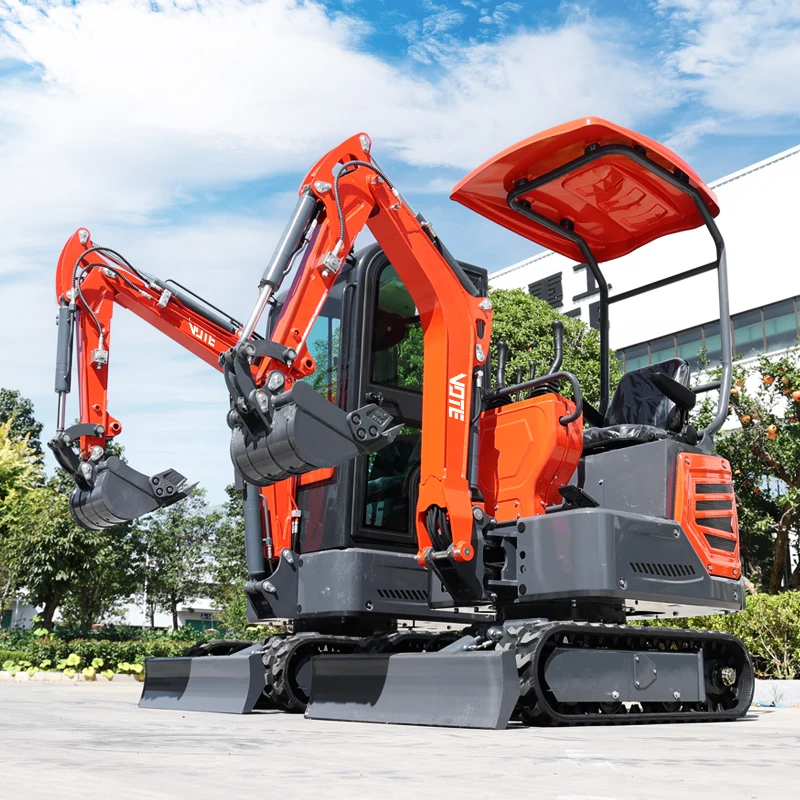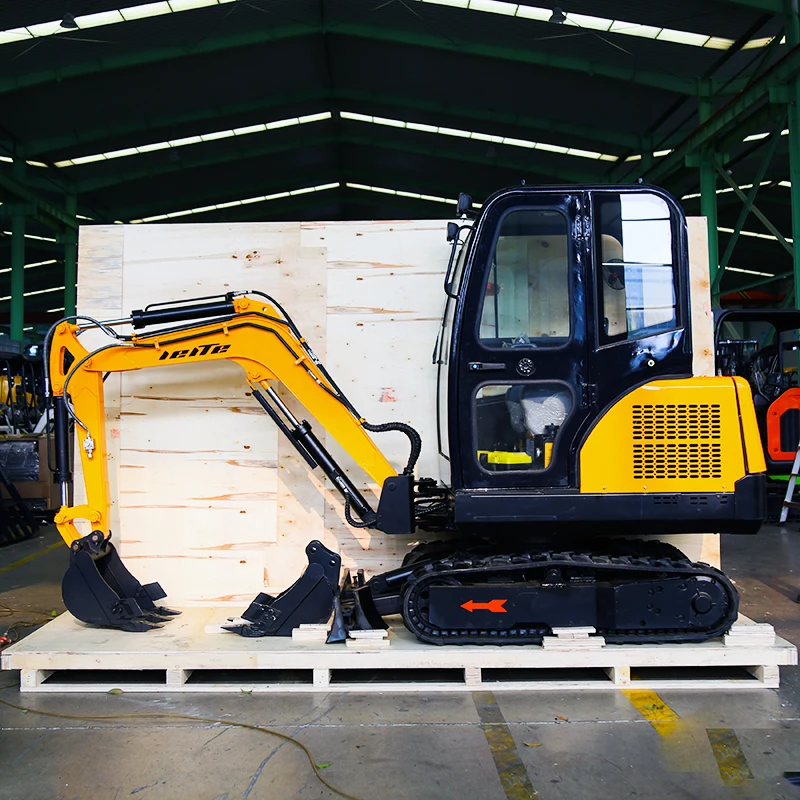Proper excavator maintenance is crucial for optimal performance and longevity of the equipment. Regular maintenance helps identify and address minor issues before they turn into major problems, reducing the risk of breakdowns and costly repairs. It also ensures that the excavator operates efficiently, enhancing productivity on construction sites and minimising downtime. By taking care of routine tasks like lubrication, filter replacements, and component inspections, operators can maximise the lifespan and reliability of their excavators.
In this blog we will dive into:
- Understanding Key Components of an Excavator
- Daily Excavator Maintenance Checks
- Periodic Excavator Maintenance
- Proper Cleaning and Storage of Excavators
- Keeping Maintenance Records
- Dealing with Common Excavator Maintenance Issues
- and how civil management software can help you
- Understanding Key Components of an Excavator
- Daily Excavator Maintenance Checks
- Periodic Excavator Maintenance (preventive maintenance plan)
- Proper Cleaning and Storage of Excavators (maintenance manual)
- Keeping Maintenance Records
- Dealing with Common Excavator Maintenance Issues
- Introducing FieldInsight
- Conclusion
Understanding Key Components of an Excavator

In an excavator, several key components require regular maintenance to ensure smooth and efficient operation:
Engine: The engine is the powerhouse of the excavator. Regular maintenance of the engine includes oil and filter changes, fuel system inspections, and monitoring coolant levels. Proper engine maintenance ensures optimal performance, fuel efficiency, and reliability of the excavator.
Hydraulic System: The hydraulic system controls the movement of the excavator’s arm, boom, and bucket. It relies on hydraulic fluid, filters, pumps, and valves. Regular maintenance involves checking hydraulic fluid levels, inspecting hoses and seals for leaks, and replacing filters. Maintaining the hydraulic system ensures precise and responsive control, preventing issues like jerky movements and loss of power.
Undercarriage: The undercarriage is the foundation of the excavator and consists of tracks, sprockets, rollers, and idlers. Regular maintenance of the undercarriage includes cleaning, lubrication, and inspection for wear and tear. Proper maintenance of the undercarriage maximises traction, stability, and overall manoeuvrability of the excavator.
Bucket: The bucket is the attachment used for digging and loading materials. It is subject to wear and tear due to constant use. Regular maintenance involves inspecting the bucket for damage, checking tooth condition, and repairing or replacing any worn components. Maintaining the bucket ensures efficient digging and loading operations, preventing performance degradation and potential hazards.
Each of these components plays a vital role in the overall operation of an excavator. The engine provides power to drive the hydraulic system, which controls the movement of the excavator’s arm and bucket. The hydraulic system allows for precise and controlled digging, lifting, and loading of materials. The undercarriage supports the weight of the excavator, provides stability on various terrains, and facilitates smooth movement. Lastly, the bucket enables efficient excavation and material handling. Proper maintenance of these components ensures the excavator functions optimally, improving productivity, safety, and extending its lifespan.

Daily Excavator Maintenance Checks
Daily maintenance checks are essential for excavators as they help identify potential issues early on, ensuring safe and efficient operation. These checks enable operators to address any problems promptly, preventing equipment breakdowns and costly repairs. Regular daily maintenance also contributes to prolonging the lifespan of the excavator and maintaining its resale value.
Here is a list of main checks that should be performed every day before using an excavator:
Fluid Levels: Check engine oil, hydraulic fluid, coolant, and fuel levels. Maintaining proper fluid levels ensures optimal performance and prevents damage to critical components.
Leaks: Inspect the excavator for any signs of fluid leaks, such as oil, hydraulic fluid, or coolant. Leaks can indicate damaged hoses, seals, or fittings and should be addressed immediately.
Undercarriage: Inspect the undercarriage components, including tracks, rollers, idlers, and sprockets. Look for signs of excessive wear, loose or missing bolts, and damaged or bent parts. Proper undercarriage maintenance ensures stability, manoeuvrability, and traction.
Filters: Check and clean or replace air filters, hydraulic filters, and fuel filters as needed. Clogged filters can restrict airflow, reduce hydraulic efficiency, and potentially cause engine damage.
Belts and Hoses: Inspect belts and hoses for signs of wear, cracks, or leaks. Damaged belts or hoses can lead to performance issues or sudden failures, so they should be replaced promptly.
Lights and Signals: Test all lights, signals, and alarms to ensure they are functioning correctly. Proper lighting and signalling are crucial for safety during operation, especially in low-light conditions.
Controls and Safety Devices: Verify that all controls, joysticks, pedals, and safety devices are in good working condition. Faulty controls can hamper operation or compromise safety.
Bucket and Attachments: Inspect the bucket and any attached tools for damage, wear, or loose connections. Ensure that the bucket teeth are secure and sharp for efficient digging and loading.
Greasing: Lubricate the specified grease points to prevent excessive wear and maintain smooth movement of components.
Documentation: Check the operator’s manual, maintenance log, or any other relevant documentation for specific manufacturer-recommended daily checks or tasks.
By performing these daily maintenance checks, operators can detect and address any issues promptly, ensuring that the excavator is in optimal condition for safe and efficient operation throughout the workday.

Periodic Excavator Maintenance (preventive maintenance plan)
Periodic maintenance tasks for excavators include various activities that go beyond the daily checks. Here are some common types of maintenance procedures and their recommended maintenance schedule:
Filter Changes: Filters, such as air filters, hydraulic filters, and fuel filters, should be regularly inspected and replaced based on the manufacturer’s recommendations or as indicated by their condition. This is typically done every 250 to 500 operating hours or as specified by the manual. Clean filters promote optimal performance by ensuring clean air, fluid, and fuel circulation, protecting vital components from contaminants.
Lubrication: Excavators have multiple joints, bearings, and pivot points that require lubrication to reduce friction and wear. Greasing these points should be done periodically, typically every 50 to 100 operating hours, or as recommended by the manufacturer. Adequate lubrication extends the lifespan of components, ensures smooth operation, and minimises the risk of premature failure.
Wear Parts Replacement: Excavator attachments, such as bucket teeth, cutting edges, and wear plates, are subject to wear during operation. These parts should be regularly inspected and replaced as needed, based on wear levels or manufacturer guidelines. Replacement frequency varies depending on factors like usage intensity, material types, and operating conditions. Timely replacement helps maintain digging efficiency and prevents excessive damage to the bucket or attachment.
Fluid Changes: Periodic fluid changes involve draining and replacing engine oil, hydraulic fluid, and coolant. The frequency of fluid changes depends on factors like operating hours, environment, and manufacturer recommendations. Generally, engine oil changes are performed every 250 to 500 operating hours, while hydraulic fluid and coolant changes may be less frequent, typically every 1,000 to 2,000 hours. Fresh fluids with proper viscosity and properties ensure smooth operation, protect against component wear, and maintain optimal temperatures.
Component Inspections: Regular inspections of various components, including belts, hoses, seals, electrical connections, and safety devices, should be carried out periodically. The inspection interval can vary but typically falls between 250 to 500 operating hours. Thorough inspections help identify signs of wear, damage, or potential failures, enabling timely repairs or replacements to maintain equipment reliability and safety.
Track and Undercarriage Maintenance: The undercarriage and tracks of an excavator require periodic maintenance. This includes cleaning debris, inspecting track tension, replacing worn or damaged components (e.g., track shoes, rollers, idlers), and adjusting track alignment. The maintenance frequency depends on the operating conditions and usage intensity but can range from every 250 to 1,000 operating hours. Proper undercarriage maintenance ensures optimal traction, stability, and extends the life of undercarriage components.
Performing these periodic maintenance tasks helps ensure the excavator operates at its best and minimises the risk of unexpected breakdowns or major repairs. Regular maintenance prevents premature component wear, maximises equipment reliability, and enhances overall performance and safety. Adhering to recommended maintenance schedules also helps comply with warranty requirements and maintain the excavator’s resale value.
Proper Cleaning and Storage of Excavators (maintenance manual)
Cleaning and proper storage are crucial aspects of excavator maintenance as they help prevent corrosion, damage, and other issues that can negatively impact the performance and lifespan of the equipment. Here’s why cleaning and storage are important, along with tips for carrying out these tasks effectively:
Corrosion Prevention: Excavators are exposed to various elements, including moisture, dirt, and chemicals. If left unaddressed, these contaminants can lead to corrosion of metal surfaces, affecting critical components. Regular cleaning helps remove dirt, mud, and debris, reducing the chances of corrosion and preserving the structural integrity of the excavator.
Maintenance of Paint and Coatings: The paint and coatings on an excavator provide protection against rust and enhance its aesthetic appeal. Regular cleaning helps maintain the condition of the paint and coatings, preventing them from peeling, fading, or becoming damaged. This also helps in preserving the excavator’s resale value.
Prevention of Clogging and Blockages: Cleaning ensures that vents, grilles, and air intakes remain clear of debris and obstructions. Unclogged air intakes are essential for proper engine cooling, while clear vents and grilles prevent overheating and maximise the efficiency of various systems.

Tips for Proper Cleaning:
Use gentle cleaning agents: Avoid harsh chemicals that may damage the paint or corrode metal surfaces. Instead, use mild detergents or specialised cleaning products recommended by the manufacturer.
Start with a rinse: Before applying any cleaning agents, use a hose or pressure washer to rinse off loose dirt, mud, and debris. This helps prevent scratching during the cleaning process.
Pay attention to undercarriage cleaning: The undercarriage is susceptible to dirt accumulation. Use a high-pressure washer or manual cleaning to remove debris, ensuring smooth movement and preventing premature wear of undercarriage components.
Clean attachments separately: If you have detachable attachments, clean them separately to ensure thorough cleaning and prevent cross-contamination of dirt or debris.
Use soft brushes and cloths: When scrubbing, use soft brushes or cloths to avoid scratching or damaging surfaces. Pay attention to hard-to-reach areas, joints, and crevices.
Dry thoroughly: After cleaning, dry the excavator thoroughly to prevent moisture accumulation, which can lead to corrosion. Use absorbent towels or allow sufficient time for air drying.
Tips for Proper Storage:
- Choose a suitable location: Store the excavator in a dry, covered area away from direct sunlight, rain, or extreme temperature fluctuations. If possible, consider using a dedicated storage facility.
- Lower attachments to the ground: Lower the bucket and any other attachments to the ground to relieve stress on hydraulic cylinders and prevent unnecessary strain.
- Secure the excavator: Engage the parking brake and use wheel chocks or track blocks to prevent unintended movement during storage.
- Lubricate and protect exposed surfaces: Apply a light coat of rust-preventive lubricant on exposed metal surfaces to protect against corrosion during storage.
- Disconnect batteries: If storing for an extended period, disconnect the excavator’s batteries to prevent drain and damage.
- Follow manufacturer guidelines: Always refer to the manufacturer’s recommendations for specific cleaning and storage instructions to ensure proper care and prevent any warranty-related issues.
By incorporating regular cleaning and proper storage practices into your excavator maintenance routine, you can protect the equipment from corrosion, damage, and other issues, ensuring its longevity and reliable performance.

Keeping Maintenance Records
Keeping comprehensive maintenance records is crucial for several reasons and can help avoid equipment failure:
Maintenance History: proper records provide a detailed history of all maintenance activities performed on the excavator. This includes routine inspections, repairs, part replacements, and any other relevant maintenance tasks. Having a complete maintenance history helps track the maintenance performed, identify recurring issues, and make informed decisions regarding future maintenance needs.
Warranty and Service Contracts: Maintenance records are often required to validate warranty claims or service contracts. Manufacturers and service providers may ask for documentation to verify that recommended maintenance schedules were followed. Accurate maintenance records can help ensure warranty coverage or service contract benefits.
Resale Value: Well-documented maintenance records enhance the resale value of the excavator. Prospective buyers are more likely to be interested in a machine with a comprehensive maintenance history, as it demonstrates proper care and maintenance throughout its lifespan.
Predictive Maintenance: Analysing maintenance records over time allows for the identification of patterns or trends in equipment performance. This information can help predict potential issues, plan preventive maintenance tasks, and schedule component replacements, thereby reducing the risk of unexpected breakdowns and optimising uptime.
Creating and maintaining a useful maintenance log involves the following steps:
Choose a Format: Decide on the format of your maintenance log. It can be digital (using spreadsheet software or specialised maintenance management software) or physical (using a dedicated maintenance logbook). Choose a format that is convenient and accessible for your needs.
Include Relevant Information: Record all essential details related to each maintenance task. This typically includes the date, type of maintenance performed, specific tasks completed, parts replaced, and any observations or notes. Include information such as the technician responsible, hours of operation, and any relevant measurements or readings.
Follow a Consistent Structure: Use a standardised format for consistency. Organise the log in a logical order, such as by date or by the type of maintenance performed. This makes it easier to navigate and retrieve information when needed.
Be Specific and Detailed: Provide detailed descriptions of maintenance tasks, including the steps taken, measurements or readings obtained, and any specific observations or findings. This level of detail helps capture a comprehensive picture of the maintenance performed and facilitates analysis in the future.
Regularly Update the Log: Make it a habit to update the maintenance log promptly after each maintenance task. This ensures accuracy and prevents important details from being forgotten or overlooked.
Store and Protect the Log: Store the maintenance log in a safe and easily accessible location. If using a physical logbook, keep it in a secure area. If using a digital format, ensure proper backup and data protection measures are in place.
Review and Analyze: Periodically review the maintenance log to identify patterns or trends. Look for recurring issues, maintenance intervals, or specific components that may require additional attention. Use this information to optimise maintenance plans and make informed decisions about future maintenance needs.
By creating and maintaining a comprehensive maintenance log, you have a valuable tool for tracking the history of maintenance activities, ensuring compliance with warranty requirements, optimising maintenance schedules, and enhancing the overall management of your excavator’s maintenance.

Dealing with Common Excavator Maintenance Issues
Several common maintenance issues can arise with excavators. Here are a few examples along with tips for identifying and addressing these issues, as well as when it’s advisable to call a professional:
- Hydraulic System Leaks: Hydraulic system leaks can occur due to damaged hoses, seals, or fittings. Signs of a hydraulic leak include puddles of hydraulic fluid, decreased performance, or unusual noises. To identify the source of the leak, inspect the hydraulic system, paying attention to hoses, connections, and cylinders. Small leaks may be fixable by tightening fittings or replacing damaged seals. However, if the leak is substantial or the source is difficult to determine, it’s best to seek professional assistance to prevent further damage or safety risks.
- Electrical Issues: Electrical problems can manifest as issues with controls, lights, or other electrical components. If you notice erratic behaviour, failure of electrical systems, or blown fuses, it may indicate an electrical issue. Check for loose connections, damaged wires, or corroded terminals. If you have the expertise and access to electrical diagrams, you can attempt simple repairs like reconnecting loose wires. However, for complex electrical issues or if you’re unsure, it’s recommended to consult a professional electrician or the manufacturer’s service centre.
- Engine Performance Problems: Engine-related issues can include rough idling, loss of power, excessive smoke, or difficulty starting. Perform basic checks like inspecting air filters, fuel lines, and fluid levels. Clean or replace filters as necessary. If the issue persists, it may require professional diagnostic tools or expertise to identify and address engine-specific problems. In such cases, it’s advisable to involve a qualified mechanic or authorised service centre.
- Track or Undercarriage Problems: Issues with the undercarriage or tracks can impact the excavator’s stability, manoeuvrability, and overall performance. Signs of problems may include abnormal noises, uneven wear, or difficulty tracking straight. Inspect the undercarriage components, such as track shoes, rollers, and idlers, for damage, wear, or loose parts. Tighten or replace components as needed. If the issue persists or requires more extensive repairs, it’s recommended to involve a professional with experience in undercarriage maintenance or contact the manufacturer’s service centre.
- Component Wear or Failure: Excavators experience wear and tear over time, leading to component failures. Monitor the condition of wear parts such as bucket teeth, cutting edges, or hydraulic seals. Inspect these components regularly and replace them when wear reaches critical levels or when they no longer perform as intended. While simple replacements can often be done by operators, complex repairs or replacements involving major components are best handled by trained technicians or the manufacturer’s service personnel.

Introducing FieldInsight
FieldInsight is a powerful software solution that can greatly assist in managing the various aspects of excavator maintenance mentioned above. With FieldInsight, you can streamline and automate your maintenance processes, ensuring regular and thorough maintenance tasks are performed on schedule.
FieldInsight provides features for creating and managing maintenance schedules, managing projects, sending reminders for upcoming tasks, and recording completed maintenance activities. It also allows you to store and access comprehensive maintenance records, including inspection reports, service history, and part replacements.
FieldInsight enables efficient tracking of equipment performance, identifying patterns or trends, and making data-driven decisions for preventive maintenance. With its user-friendly interface and mobile accessibility, FieldInsight simplifies communication and collaboration between operators, maintenance teams, and management, facilitating a cohesive and efficient maintenance workflow.
By leveraging FieldInsight, you can enhance the management of your excavator maintenance, ensuring optimal performance, prolonged lifespan, and minimise downtime.

Conclusion
With maintenance tips, a regular maintenance schedule, and thorough pre-start checklist you can greatly improve your equipment lifespan. From lower operating costs to saving time, there are countless benefits you can gain with the right software.
Now that we have discussed the following points, we can dive into how software can help you.
- Understanding Key Components of an Excavator
- Daily Excavator Maintenance Checks
- Periodic Excavator Maintenance
- Proper Cleaning and Storage of Excavators
- Keeping Maintenance Records
- Dealing with Common Excavator Maintenance Issues
Regular and thorough excavator maintenance is crucial for maintaining optimal performance, prolonging the machine’s lifespan, and minimising downtime. By adhering to a comprehensive maintenance routine, including inspections, fluid changes, component replacements, and cleaning, you can identify and address potential issues early on, prevent major breakdowns, and ensure the excavator operates efficiently, reliably, and safely throughout its service life.
This proactive approach reduces costly repairs, maximises productivity, and extends the overall lifespan of the machine, ultimately saving time, money, and resources in the long run.
If you are in the field service field, FieldInsight can help you. Book a call today to enquire more about features and find out how we can help you.